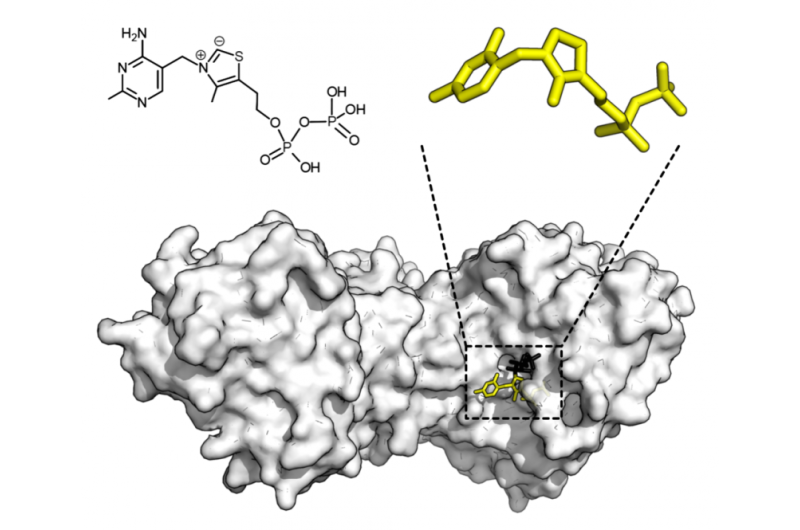Research prompts rethink of enzyme evolution

New research by scientists at New Zealand's University of Otago suggests a need for a fundamental rethink of the evolutionary path of enzymes, the proteins vital to all life on Earth.
Enzymes catalyse a vast array of biologically relevant chemical reactions even in the simplest living cells.
Biochemist Dr Wayne Patrick says that people tend to imagine evolution as a slow and steady march from barely functional life forms in the primordial soup, towards a modern-day pinnacle of near perfection.
"When it comes to enzyme evolution, this is also the textbook version of the events occurring at the molecular level; a smooth and steady trajectory, from barely functional primordial catalysts to the highly active and specific enzymes that we observe today. However, upon closer examination, the reality appears quite different."
In an article appearing in the UK Journal of the Royal Society Interface, Dr Patrick, his PhD student Matilda Newton and their collaborator Professor Vic Arcus (Waikato), summarise experimental data that challenges the prevailing thinking.
"We discuss examples in which enzymes have evolved with lightning speed—over years, rather than eons—and provide evidence that many enzymes were better catalysts in the ancient past than they are today."
One example of extraordinarily rapid evolution is the emergence of enzymes that modern-day bacteria use to break down human-made antibiotics and pesticides, he says.
"Studying the complexities of enzyme evolution not only provides fundamental knowledge about how life emerged from the primordial soup, but also gives insights into designing proteins with biomedical and biotechnological applications."
Dr Patrick and colleagues at the Department of Biochemistry's Laboratory for Enzyme Engineering and Evolution are currently pursuing such applications. Their work includes collaborating with leading biotechnology company LanzaTech, which has a microbe that can grow by using harmful gases from industrial plants such as steel mills and oil refineries.
The Otago researchers are engineering enzymes to put into this microbe so it can produce useful raw materials that would otherwise have to be made from petroleum.
"This is a great example of the ways in which really fundamental research—carried out with a grant from the Marsden Fund of New Zealand—can translate into applied outcomes in unexpected ways," Dr Patrick says.
More information: Rapid bursts and slow declines: on the possible evolutionary trajectories of enzymes, rsif.royalsocietypublishing.or … .1098/rsif.2015.0036
Journal information: Journal of the Royal Society Interface
Provided by University of Otago


















